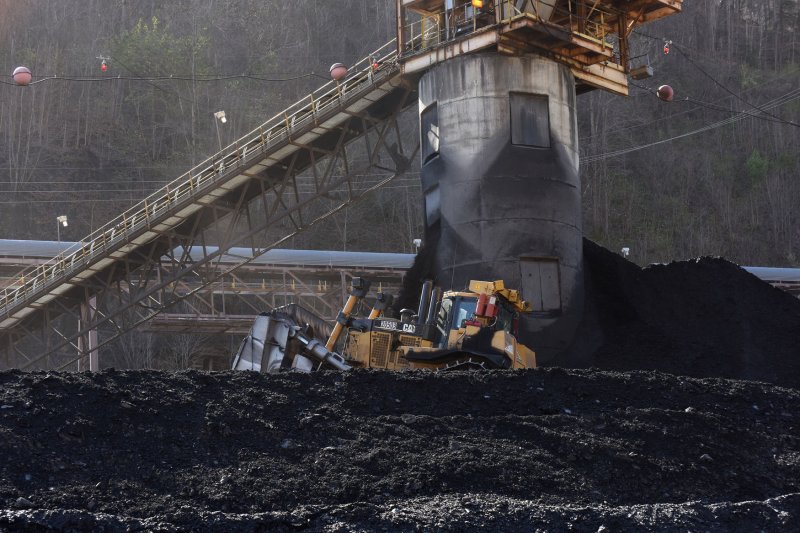Joint U.S. and Canadian study aims to find a commercial opportunity for new ways to cut emissions from coal-fired power plants. File photo by Debbie Hill/ UPI |
License Photo
OTTAWA, Oct. 19 (UPI) -- The federal U.S. and Canadian governments said they'd work together at a test facility in Canada to examine ways to cut emissions from coal-fired plants.
Natural Resources Canada and the U.S. Department of Energy opened a test facility to examine the use of a process known as carbon capture, utilization and storage at coal-fired power plants.
"Canada and the United States share a bold vision for our continent: a vision based on collaboration, and one that secures North America's place as one of the world's most dynamic energy regions," Kim Rudd, the parliamentary secretary to the Canadian Minister of Natural Resources, said in a statement. "We will continue to work together to meet our climate change objectives, increase competitiveness and support employment opportunities."
Studies from the test facility will examine how to make use of a way to reduce emissions from power plants fired by coal at a commercial scale.
The process, CCUS, aims to cut the emission of carbon dioxide, a potent greenhouse gas, from flue gas through permanent storage options. Global agreements aimed at cutting emissions in an effort to combat the effects of climate change may fall short without the right technology in place.
The method under review at the Canadian facility uses pure oxygen, rather than air, to burn fuels in a way that limits the production of some pollutants. This in turn concentrates any CO2 produced and could limit the costs associated with storing the greenhouse gas.
"The captured CO2 can then be stored or used beneficially to develop other products, including feedstock and chemicals," the U.S. Department of Energy explained.
In Canada, a panel of experts in oil-rich Alberta is working on plans to retire coal-fired power plants and the mining operations associated with them. The provincial government said the type of coal found in Alberta is low in sulfur and burns "relatively clean" compared with other types of coal found around the world, though it aims to eliminate pollution from coal-fired power by 2030 as natural gas and renewables move in to take the place of coal.
In a 2013 study, the International Energy Agency described broad-based carbon capture and storage as a "necessary addition" to other low-carbon energy technologies meant to drive down global greenhouse gas emissions.















